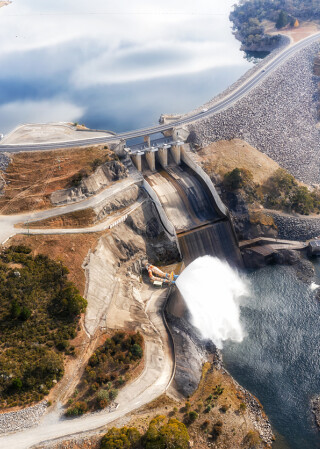The provisions of a large number of longstanding State environmental planning policies (“SEPPs”) and regional environmental plans were transferred into a handful of new SEPPs as of 1 March 2022 as part of the NSW Government’s SEPP consolidation program.
In particular, State Environmental Planning Policy (Biodiversity and Conservation) 2021 (“SEPP B&C”) contained the transferred provisions of a range of former SEPPs dealing with topics such as vegetation removal, koala habitat protection and water catchments.
In the case of water catchment matters, the former SEPPs transferred into SEPP B&C included the following:
- State Environmental Planning Policy (Sydney Drinking Water Catchment) 2011;
- Sydney Regional Environmental Plan No 20 – Hawkesbury-Nepean River (No 2 – 1997);
- Sydney Regional Environmental Plan (Sydney Harbour Catchment) 2005; and
- Greater Metropolitan Regional Environmental Plan No 2—Georges River Catchment.
Until recently, SEPP B&C merely contained the transferred and renumbered provisions of these SEPPs, meaning that SEPP B&C bore a high degree of resemblance to the provisions as they previously existed under the former SEPPs.
However, a significant amendment to the water catchment provisions was made by way of State Environmental Planning Policy (Water Catchments) 2022 (“SEPP Water Catchments”), which commenced on 21 November 2022.
SEPP Water Catchments relevantly omitted Chapters 6-12 of SEPP B&C, and inserted a new consolidated Chapter 6 dealing with all water catchment matters and applying to land in the following catchments:
- the Sydney Drinking Water Catchment;
- the Sydney Harbour Catchment;
- the Georges River Catchment; and
- the Hawkesbury-Nepean Catchment.
The new Chapter 6 contains the following parts:
- Part 6.1: Preliminary;
- Part 6.2: Development in regulated catchments;
- Part 6.3: Foreshores and Waterways Area;
- Part 6.4: Heritage conservation in Sydney Harbour;
- Part 6.5 Sydney Drinking Water Catchment; and
- Part 6.6: Miscellaneous.
Of particular note is Part 6.2 of the new Chapter 6, which contains some general development controls applying to land within all of the regulated catchments.
The Department of Planning and Environment has indicated that the amendments made pursuant to SEPP Water Catchments are part of its delivery of a number of changes that were exhibited under an Explanation of Intended Effect for a proposed Environment SEPP in 2017-2018.
Relevantly, section 6.65 of SEPP B&C (inserted pursuant to SEPP Water Catchments) contains a savings and transitional provision in the following terms:
“6.65 Savings and transitional provisions
(1) The former provisions continue to apply, and the other provisions of this Chapter do not apply, to an application for development consent lodged, but not finally determined, before the commencement of State Environmental Planning Policy Amendment (Water Catchments) 2022.
(2) A master plan adopted and in force under section 10.46 immediately before its repeal by State Environmental Planning Policy Amendment (Water Catchments) 2022 is taken, on and from the commencement of this Chapter, to have effect as a master plan within the meaning of Part 6.3, Division 5.
(3) In this section—
former provisions means—
(a) Chapters 6–12 as in force immediately before their repeal by State Environmental Planning Policy Amendment (Water Catchments) 2022, and
(b) the provisions of each environmental planning instrument amended by State Environmental Planning Policy Amendment (Water Catchments) 2022 that would be in force if the instrument had not been amended by that Policy.”
The savings and transitional provision means that the new Chapter 6 does not apply to development applications lodged but not finally determined before 21 November 2022. For those applications, it will be necessary to apply the historical provisions of Chapters 6-12 of SEPP B&C as they existed prior to 21 November 2022.
It will otherwise be necessary for those assessing developments in the water catchments to familiarise themselves with the new Chapter 6 of SEPP B&C so that it may be applied to development applications lodged after 21 November 2022.
SEPP Water Catchments also made the following changes of note:
- Inserting a new clause relating to the protection of public bushland into relevant LEPs, where such requirements applied under the previous Chapter 6 of SEPP B&C (containing the transferred provisions of the former State Environmental Planning Policy No 19—Bushland in Urban Areas).
- Amended the Standard Instrument and non-standard LEPs to transfer provisions prohibiting canal estate development from Chapter 7 of SEPP B&C to LEPs.
The Department of Planning and Environment’s website relating to the reforms (including a FAQs document) can be found here.
For further information on these planning and environmental law updates, please contact Adam Seton on aseton@marsdens.net.au or (02) 4626 5077 and David Baird on dbaird@marsdens.net.au or (02) 4626 5077.
The contents of this publication are for reference purposes only. This publication does not constitute legal advice and should not be relied upon as legal advice. Specific legal advice should always be sought separately before taking any action based on this publication.


